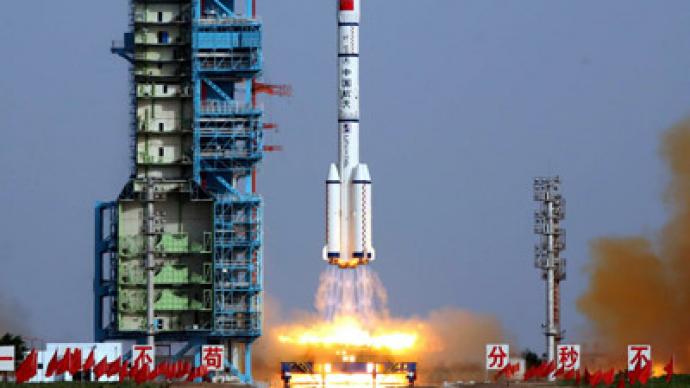China planning manned space mission for June 2013

China’s next manned orbital mission is to take place in June next year, the country’s top space official said. Beijing's rapid rise as a space-faring nation is part of its global ambition to cement its superpower status.
The Shenzhou-10 spacecraft, which is to be launched in June 2013, will most likely carry a crew of two men and a woman, just like its predecessor Shenzhou-9, the deputy commander-in-chief of China's manned space program said on the sidelines of the 18th National Congress of the Communist Party.
"They will stay in space for 15 days, operating both automated and manual space dockings with the target orbiter Tiangong-1, conducting scientific experiments in the lab module and giving science lectures to spectators on Earth," Niu Hongguang told China National Radio.
Tiangong-1 is the country's first experimental space station developed, among other things, to test docking capabilities and ultimately place a larger modular station into orbit by 2020. To achieve this, Tiangong-1 is planned to be taken out of orbit in 2013 and substituted by bigger modules, the Tiangong-2 and Tiangong-3.
"Tiangong-1, with a design life of two years, will likely remain in orbit for further operations after the space docking with Shenzhou-10," Niu said.
For now, Tiangong-1, which has been in space since September 2011, successfully docked to the Shenzhou-8 unmanned spacecraft last November and the manned Shenzhou-9 craft, with Liu Yang, China's first woman in space, on board, this past June. That mission will most likely see another Chinese woman reach for the stars, Niu speculated.
In the coming mission, Shenzhou-10 aims to test the lab module's functions, as well as the abilities of the taikonauts, China's astronauts, in space. "The success of this mission might enable China to construct a space lab and a space station," Niu added.
Continuing its ambitious space plans, China's latest white paper, published in late 2011, also calls for a manned moon mission – an achievement that only the US has managed to tackle.
"China will conduct studies on the preliminary plan for a human lunar landing," the State Council white paper said, calling for exploration of planets and asteroids.
But before taikonauts step on the moon, Beijing has said it will also attempt to land an exploratory craft on the lunar surface in the second half of 2013 to transmit data on the topography of our closest celestial neighbor.
China sees its space program as a symbol of national pride, rising global influence and growing technical expertise.
Beijing began its manned space program in 1992, and in 2003 it successfully sent Yang Liwei, the country's first taikonaut, into orbit onboard the Shenzhou-5.
Further success followed in 2005 and in 2008, when Zhai Zhigang became the first taikanout to conduct extra-vehicular activities.
The announcement of the 2013 space mission comes as China prepares for once-in-a-decade power transition at the 18th National Congress of the Communist Party.















